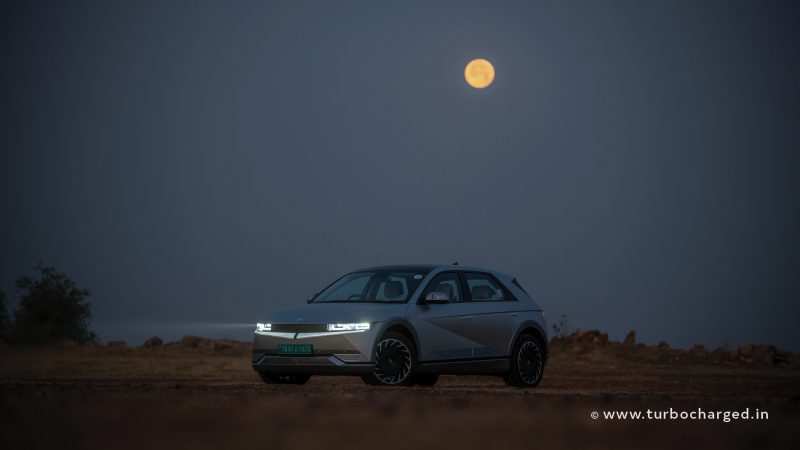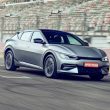EVs are not the future anymore. Puzzled? Well, that’s because they are the present already! The rise of electric cars, especially over the past half decade, has been meteoric. They’re here and are changing the way we perceive automobiles and the way we live with them, for the better. And the IONIQ 5, Hyundai’s latest EV to hit our shores, is nothing short of setting benchmarks in the premium EV space, looking at its ICE-powered rivals in the eye with its futuristic design, technology, performance and so much more! With an ARAI-certified range of 631km, the IONIQ 5’s range per charge is also among the highest, making it apt for a long distance trip. And with everyone talking about roadtripping in EVs these days, we just had to hit the road with the IONIQ 5. With a difference, of course.
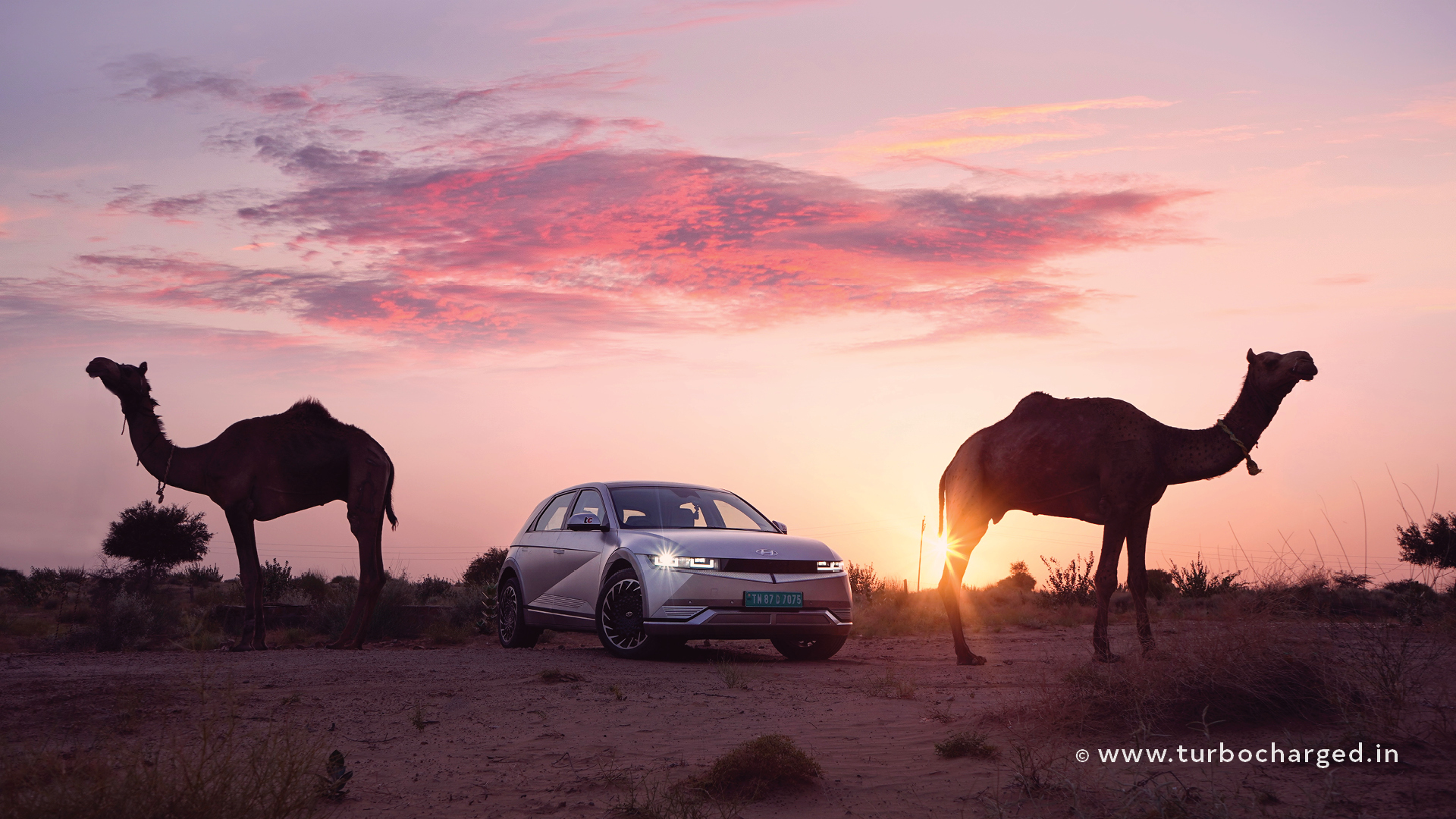
We decided to take the IONIQ 5 to Longewala in Rajasthan. Why, you ask? For starters, Rajasthan is home to some of the best driving roads in India and a drive across the state, in the 217PS and 350Nm IONIQ 5, does sound like the perfect recipe for a good road trip. That’s not exactly why I headed there though. The Longewala border in Rajasthan is steeped in history and a place I’ve never had the opportunity to visit. To add to that, May is the hottest time of the year there, as summers are at their absolute peak – temperatures at Longewala hit a staggering 50 degrees Celsius and above! With surface temperatures well above 60 degree Celsius, the searing heat during the day could make the tarmac melt! How’s that for a challenge for an EV?
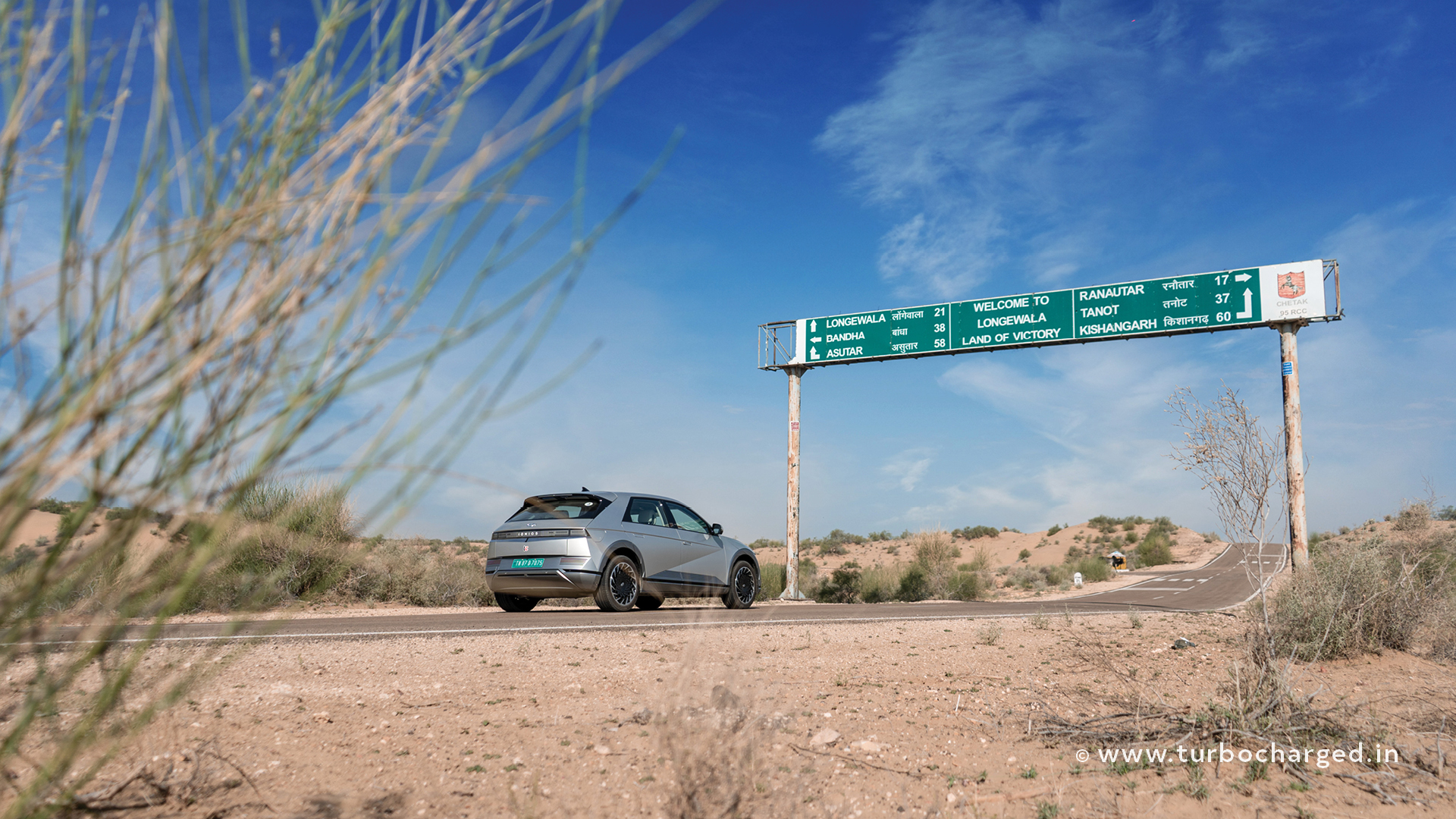
This is something that’s never been done before – driving to India’s hottest border where our soldiers safeguard the nation in extreme heat, in an electric car! The IONIQ 5 is capable of letting you cover over 500km in a single charge, which come to think of it, is the distance most people do on a multi-day roadtrip, especially in summers. The pace at which the EV charging network in India is growing means you can drive for a lot longer in a day, as 30kW and 60kW DC chargers are becoming commonplace rapidly. A plethora of apps are available, that tell you about the nearest charging station, its outputs, capacity and more, so hitting the road in an EV is easier than ever before today.
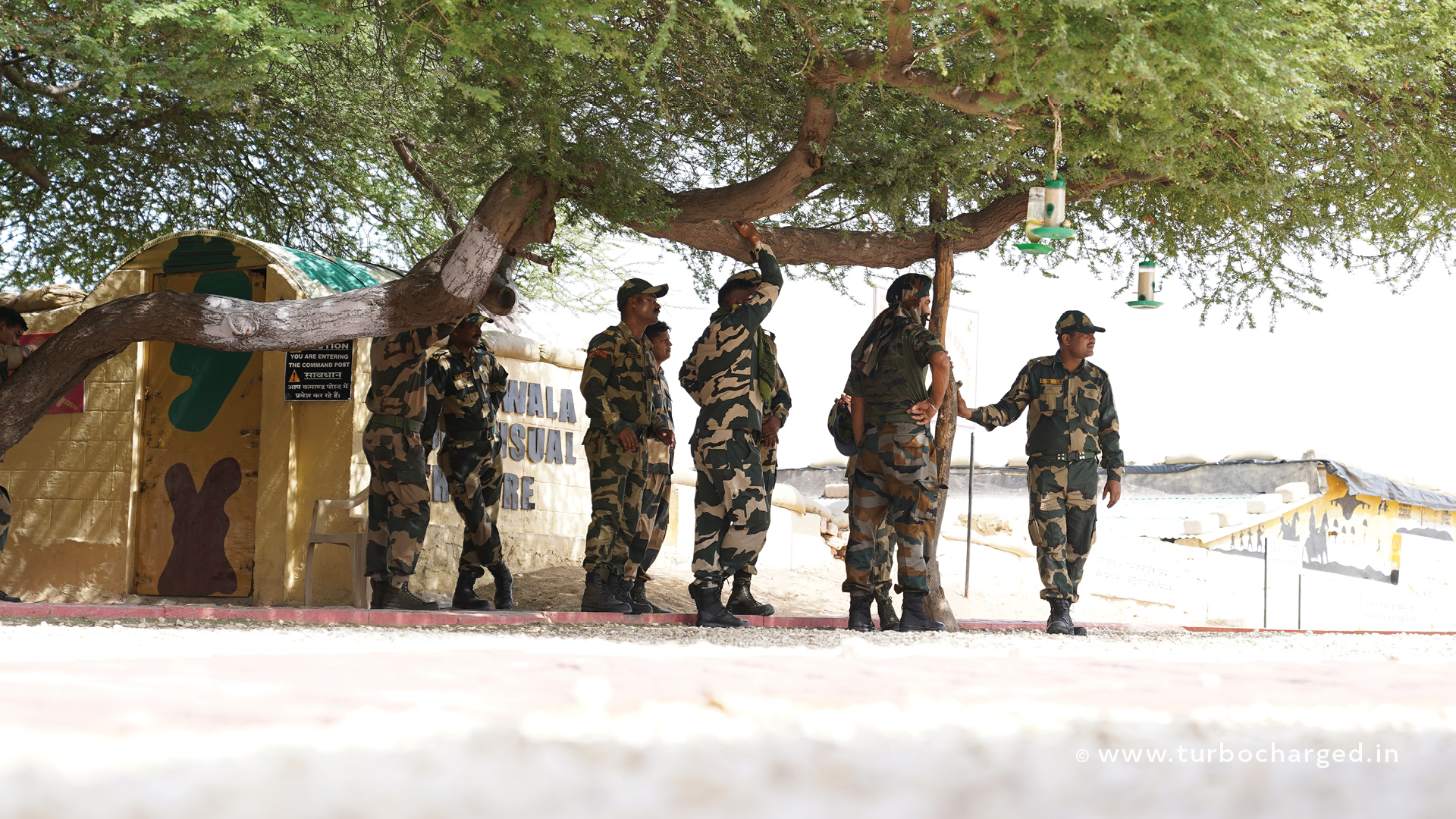
The IONIQ 5 was turning heads on the road, not just because of its novelty factor but also because it looks unlike any other car in the country, let alone EVs! The unique design cues like the pixel-inspired headlamps and tail lights, the geometrically perfect boxy shape, lights across the front bumper, positioned just under the headlamps all make the IONIQ 5 stand out. You also cannot miss the 20-inch alloy wheels, again, for their design. And at 163mm, the IONIQ 5’s ground clearance is the highest in Hyundai India’s current product line-up which might come as a surprise to many.
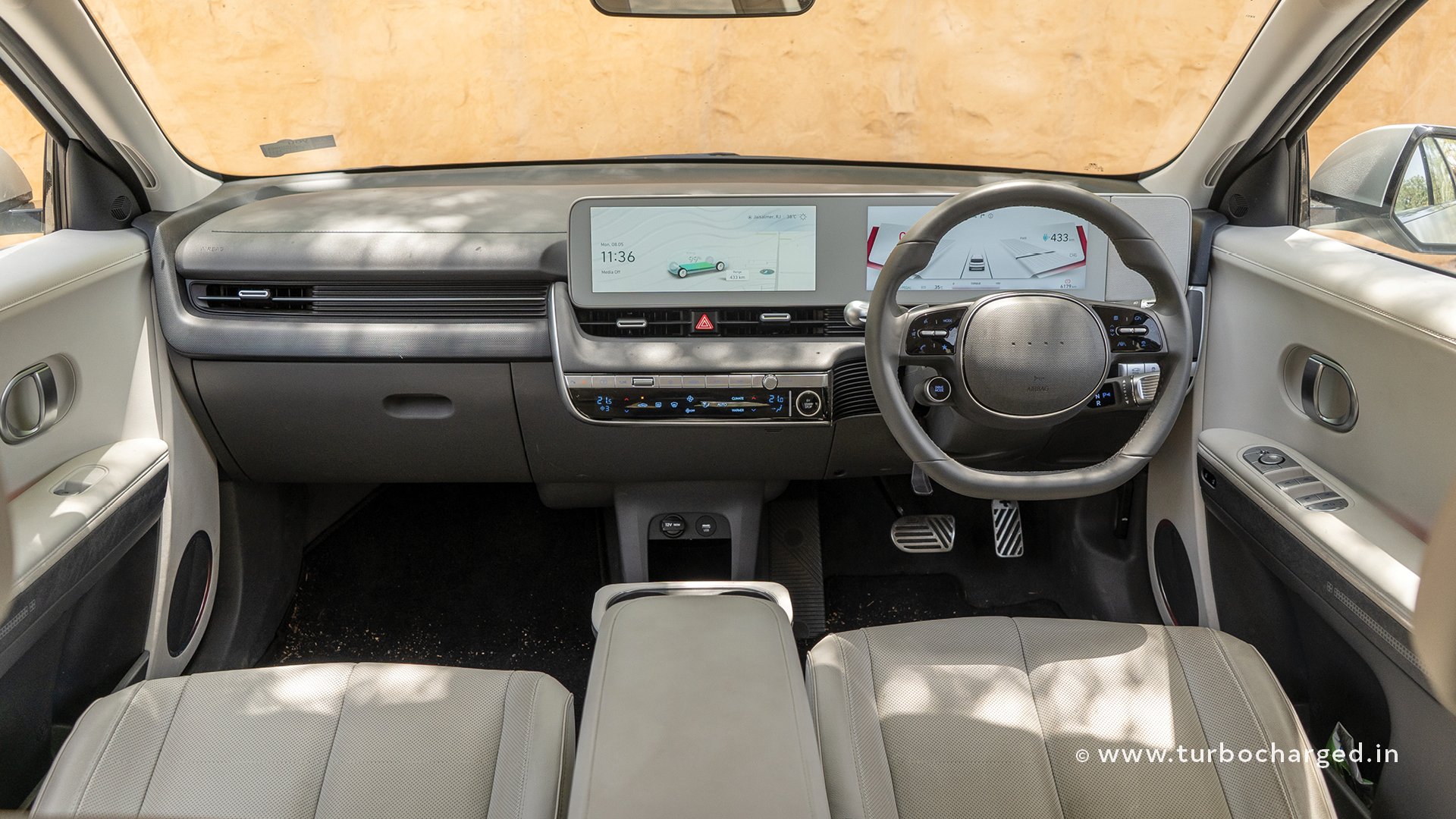
The dual screens inside reminded me of Apple’s early generation iPads, while the dashboard design, white and grey colour scheme all add to the cabin’s uniqueness. Then there’s distinctive bits you will not see in ICE-powered vehicle like the sliding centre console, recline and electric sliding function for the second row and also the unique opening of the sunshade, as it splits from the centre. There’s also tonnes of space for all your belongings in the cabin besides the spacious boot (including the storage space under the hood!) which add to the IONIQ 5’s suitability for long drives. The battery has also been packaged very smartly and does not intrude into cabin space, neither does it increase the floor height inside the cabin.
As civilisation thinned out and made way for the sand dunes, the IONIQ 5 continued to impress with its brilliance. With Hyundai’s SmartSense onboard, the IONIQ 5 boasts Level 2 ADAS that make light of keeping the driver at ease courtesy its front cameras, front radars and rear radars. It integrates features like Forward Collision Warning which not only warns the driver in case you get too close to the vehicle ahead but also applies the brakes and stops the car in an emergency. You also get Safe Exit Assist which reduces the risk of crashes with vehicles coming from the rear when departing. You further have Lane Departure Warning, Lane Keeping Assist, a Blind Spot View Monitor, Blind Spot Collision Warning, besides Smart Cruise Control with stop and go.
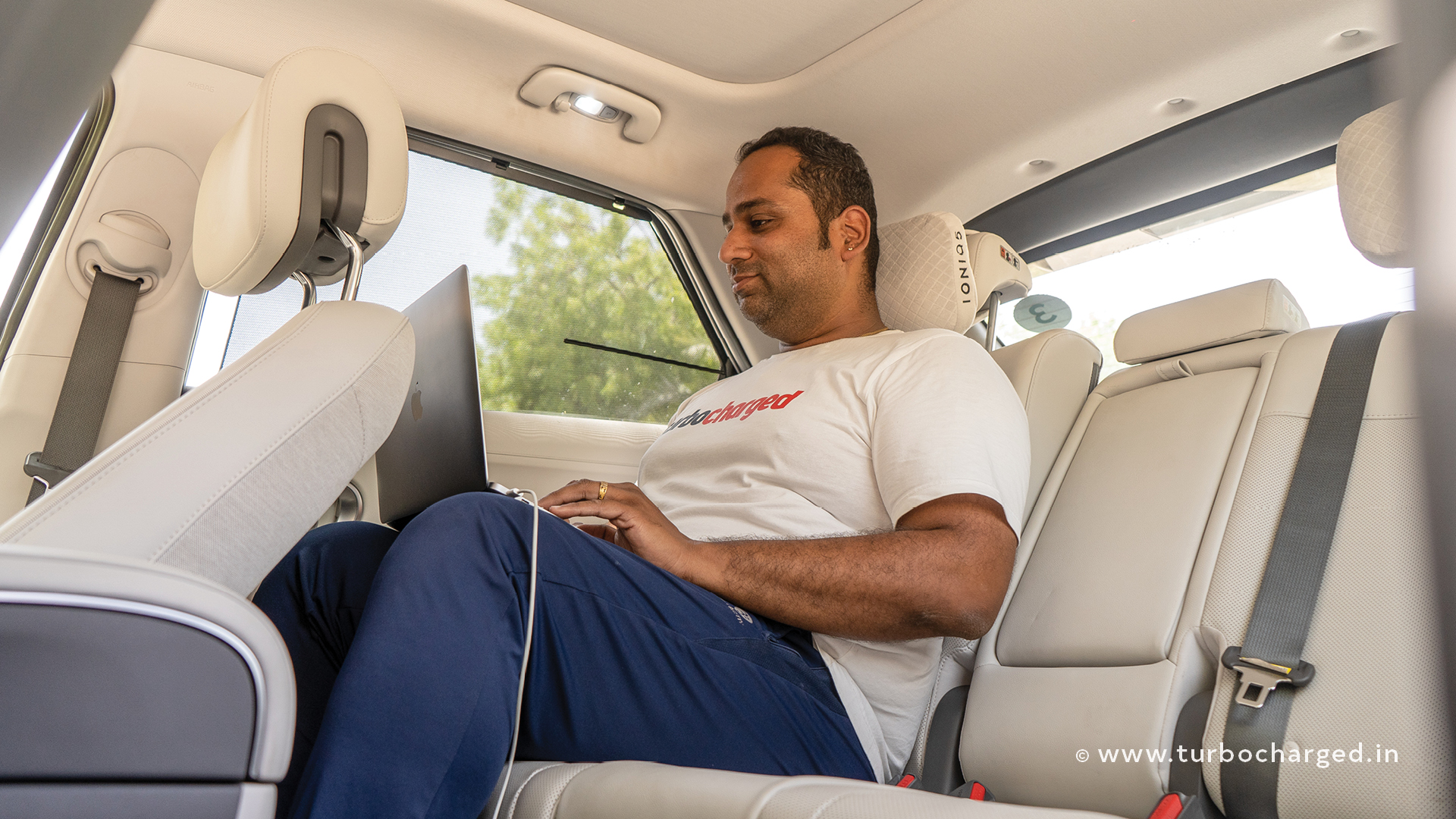
Cruise control thus lets you maintain a safe distance with the vehicle ahead and will also apply the brakes and bring the IONIQ 5 to a full halt in case the vehicle ahead stops and then start moving when the vehicle ahead does, adding to convenience. The IONIQ 5 is thus equipped with one of the most comprehensive ADAS suites. So you have lesser things to focus on from behind the wheel, upping its quotient as a mile muncher. The IONIQ 5 is also equipped with Hyundai’s i-Pedal system that increases regenerative braking to the point where you don’t need to use the brake pedal at all and you need to simply take your foot off the throttle to slow the car down or stop.
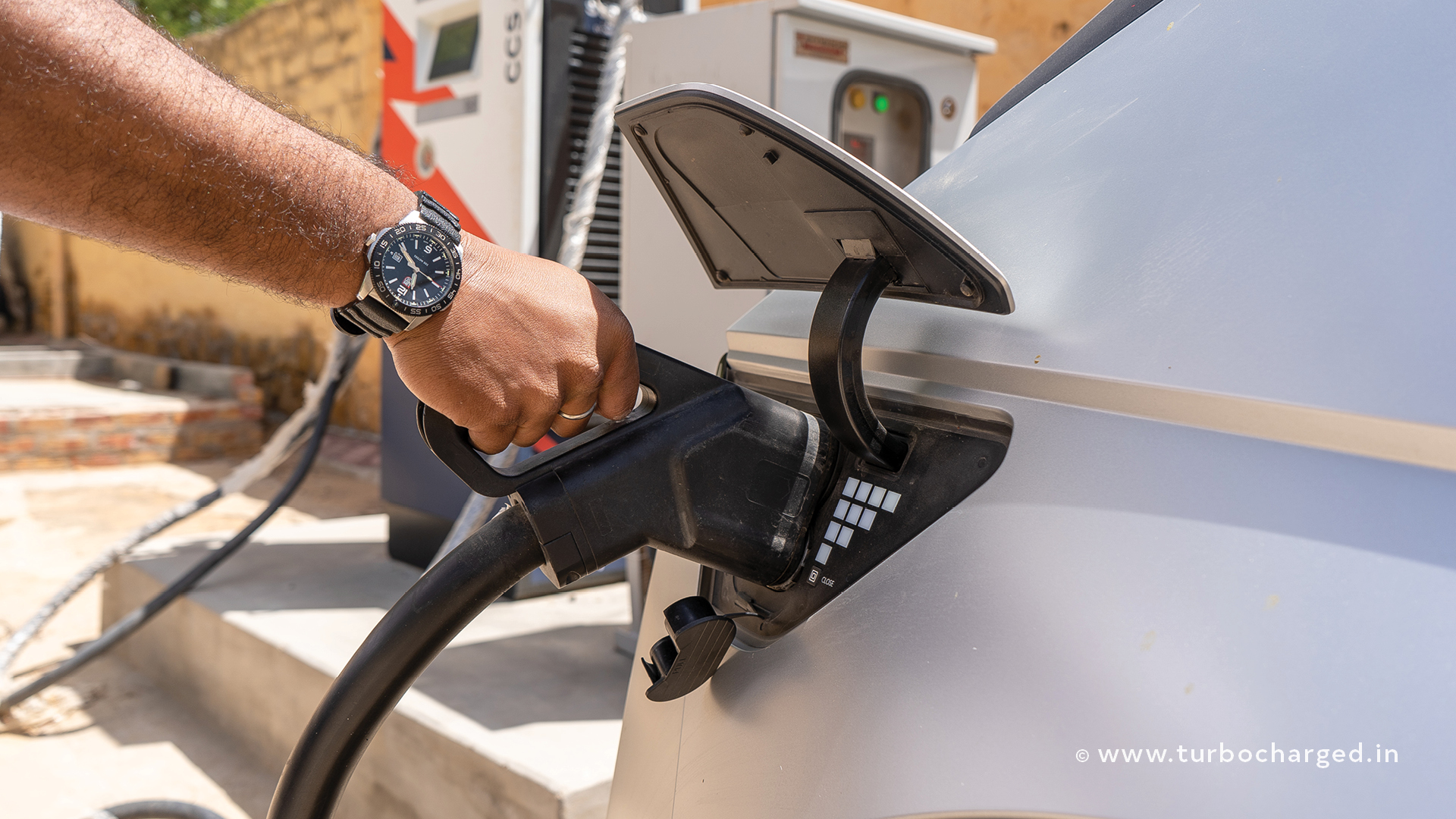
The strong regeneration also helps you recharge the batteries, which means longer range per charge. Jaisalmer is where we found the last fast charger – in fact there’s just one EV charging station in the city! It’s a 60kW fast charger by Statiq and helped me juice up the IONIQ 5’s 72.6kWh battery pack in about an hour – from 23 percent to 100 percent. The IONIQ 5 supports 800 volt fast charging meaning you could recharge its battery pack from 10 percent to 80 percent in just 18 minutes, using a 350 kilowatt fast charger. 30 to 60 kilowatt chargers are common in India and recharge the IONIQ 5’s battery pack in just about an hour, ample time to take a break or have a coffee on a roadtrip.
I left from Jaisalmer with a fully-charged battery pack, good enough for 493km in Sport mode, 526km in Normal and 546km in Eco mode, with the air-conditioning on. More than enough for me to make it to the Longewala border and back, which is 112km from Jaisalmer. The IONIQ 5 was helping me realise that long range and fast charging ability is all you need to pull off multi-day roadtrips in an EV. The climate control system was doing a brilliant job even with the air temperature outside well above 40 degree Celsius besides which the front seats are heated and cooled. With no engine under the hood, the IONIQ 5 is also super quiet to drive. Cabin insulation is excellent and it feels akin to a far more expensive luxury SUV and the cabin quietness also helps in reducing fatigue.
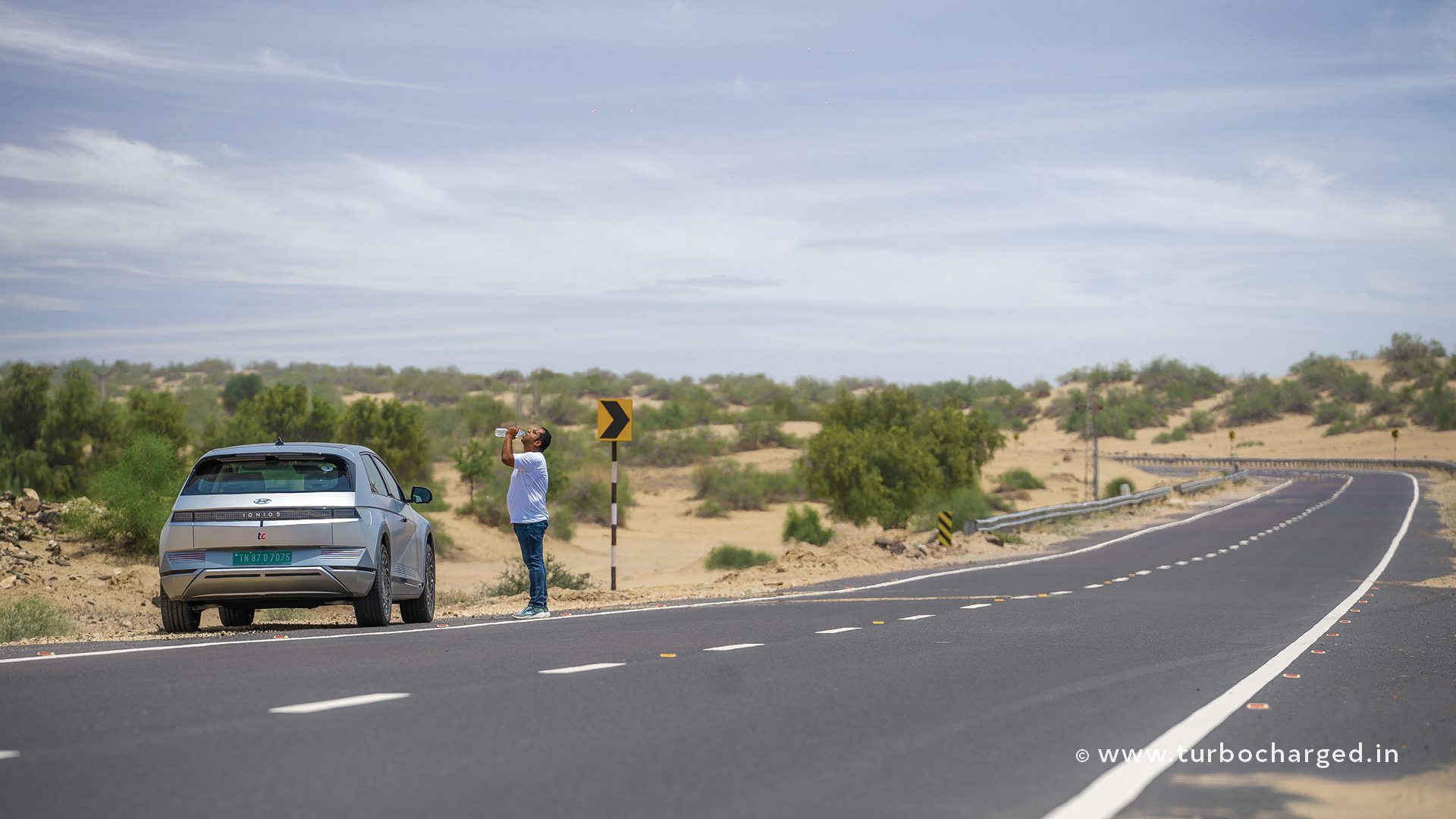
The road from Jaisalmer to Longewala, the last full-fledged city before the border (there’s only a few tiny villages beyond it) is a brilliant one. It is a section of the Bharatmala Pariyojna, a highway development program taken up by the Government of India. This is the second largest highway project undertaken by the Government and encompasses connecting a variety of regions, ranging from satellite cities to remote areas. The Bharatmala Pariyojna is aimed at improving connectivity across the country, via a meticulously planned network of high speed roads. For petrolheads, this translates to excellent driving roads, like the one connecting Jaisalmer to the border!
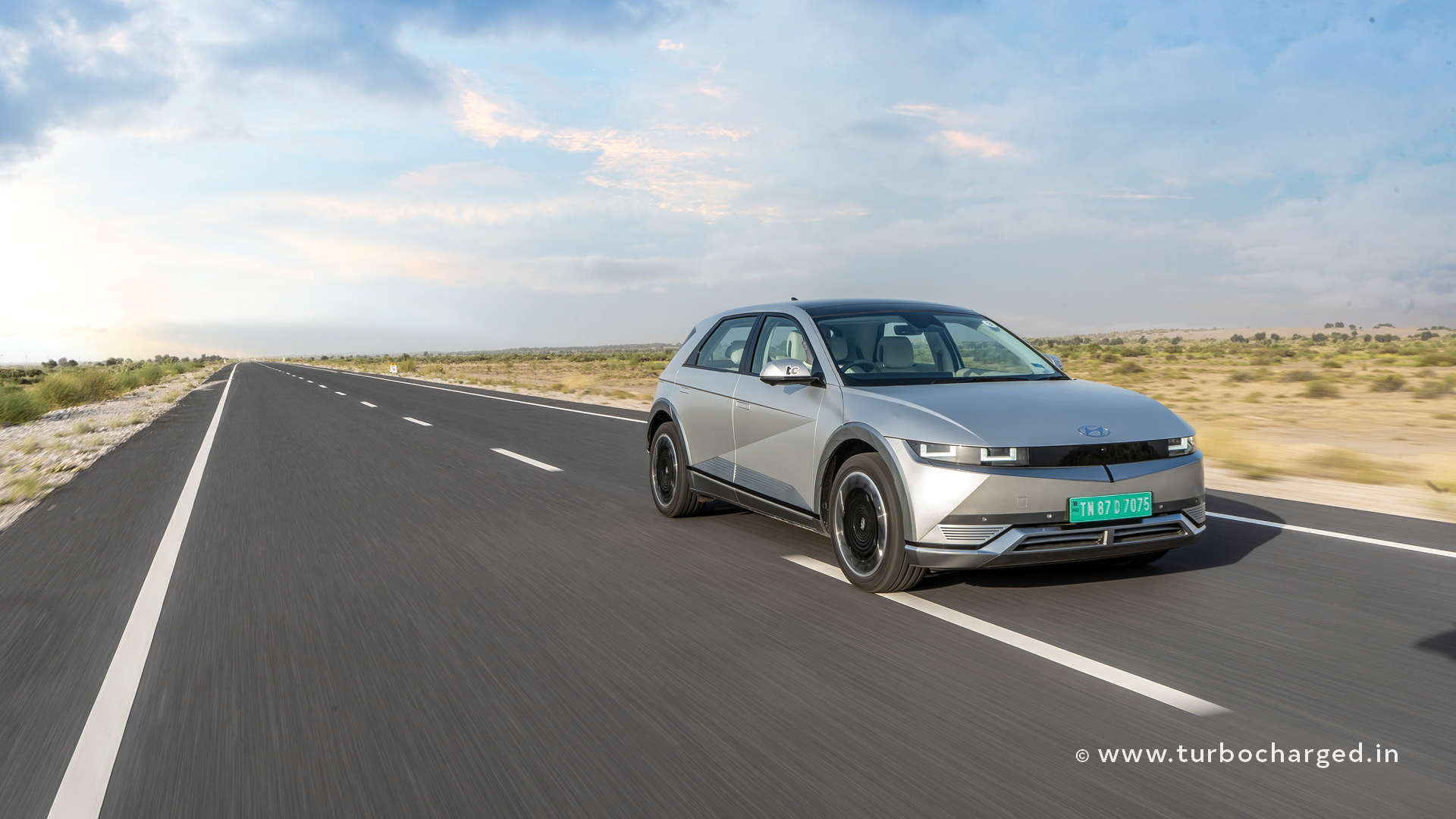
With not a soul around and the super smooth tarmac, the highway was turning out to be an excellent one to enjoy the road trip. The IONIQ 5’s 72.6kW battery pack sends 217PS and 350Nm to its rear wheels only, adding to its charm as a good driver’s car. More importantly, the throttle response is so smooth, you’ll almost want to believe there’s a refined petrol engine under its hood. Hyundai’s engineers have ensured throttle responses are very progressive, which coupled with its instant surge of torque offers a feel that will have enthusiasts break into a smile. The IONIQ 5 is Hyundai’s first born electric vehicle, as it is based on the manufacturer’s E-GMP platform.
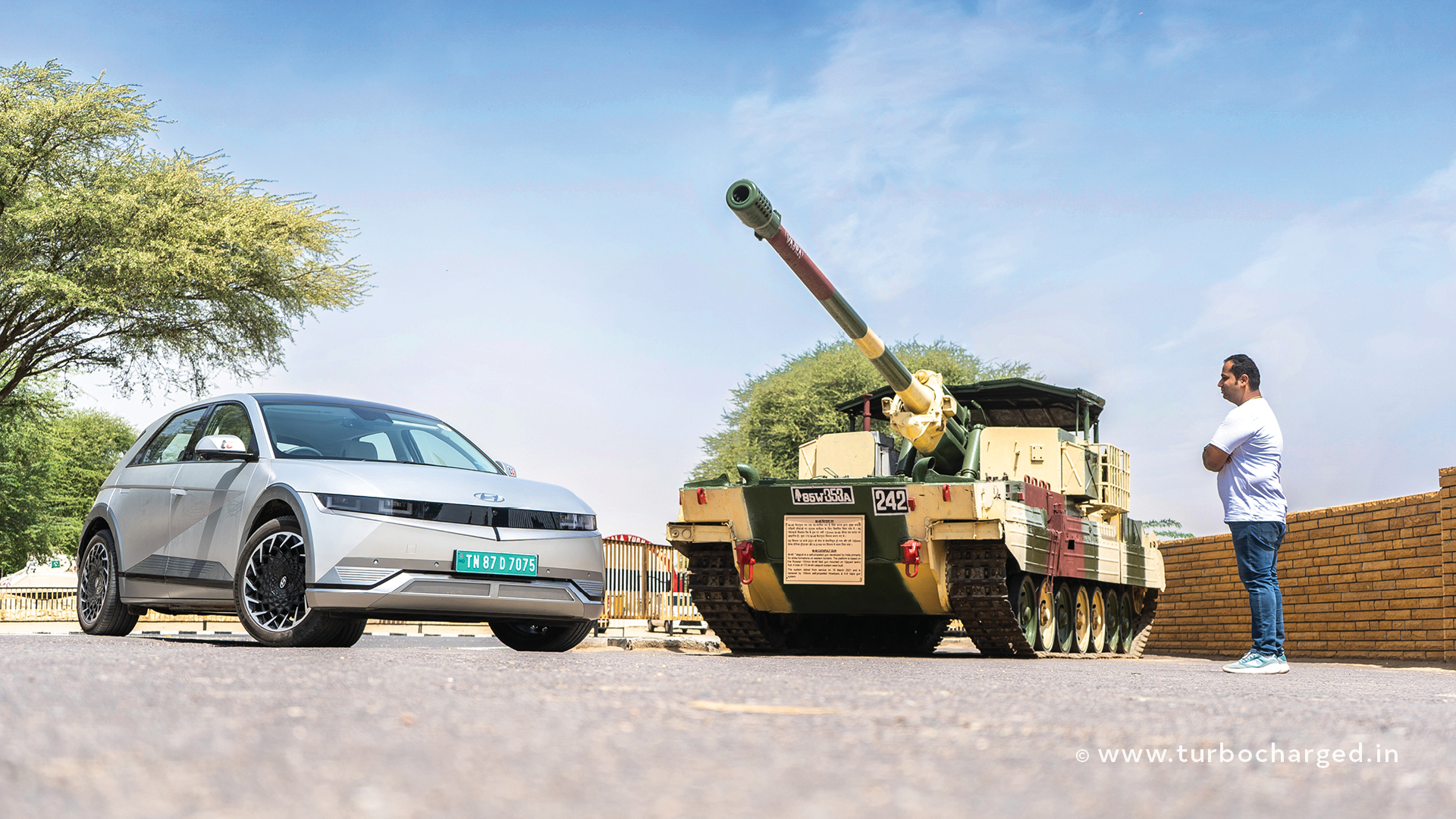
The IONIQ 5 is also a brilliant driver’s car, as the chassis and suspension let you enjoy your time behind the wheel. As I drove on towards Longewala I also passed hundreds of windmills. This part of Rajasthan is also known for its extensive windmill farms, one of the cleanest renewable energy sources. To draw parallels, the IONIQ 5 sets benchmarks not just with its features and technology, but its zero tail pipe emissions as well. With a strong focus on sustainability, EVs like the IONIQ 5 contribute towards reducing the carbon footprint of the automobile industry, besides helping ensure the air we all breathe is cleaner.
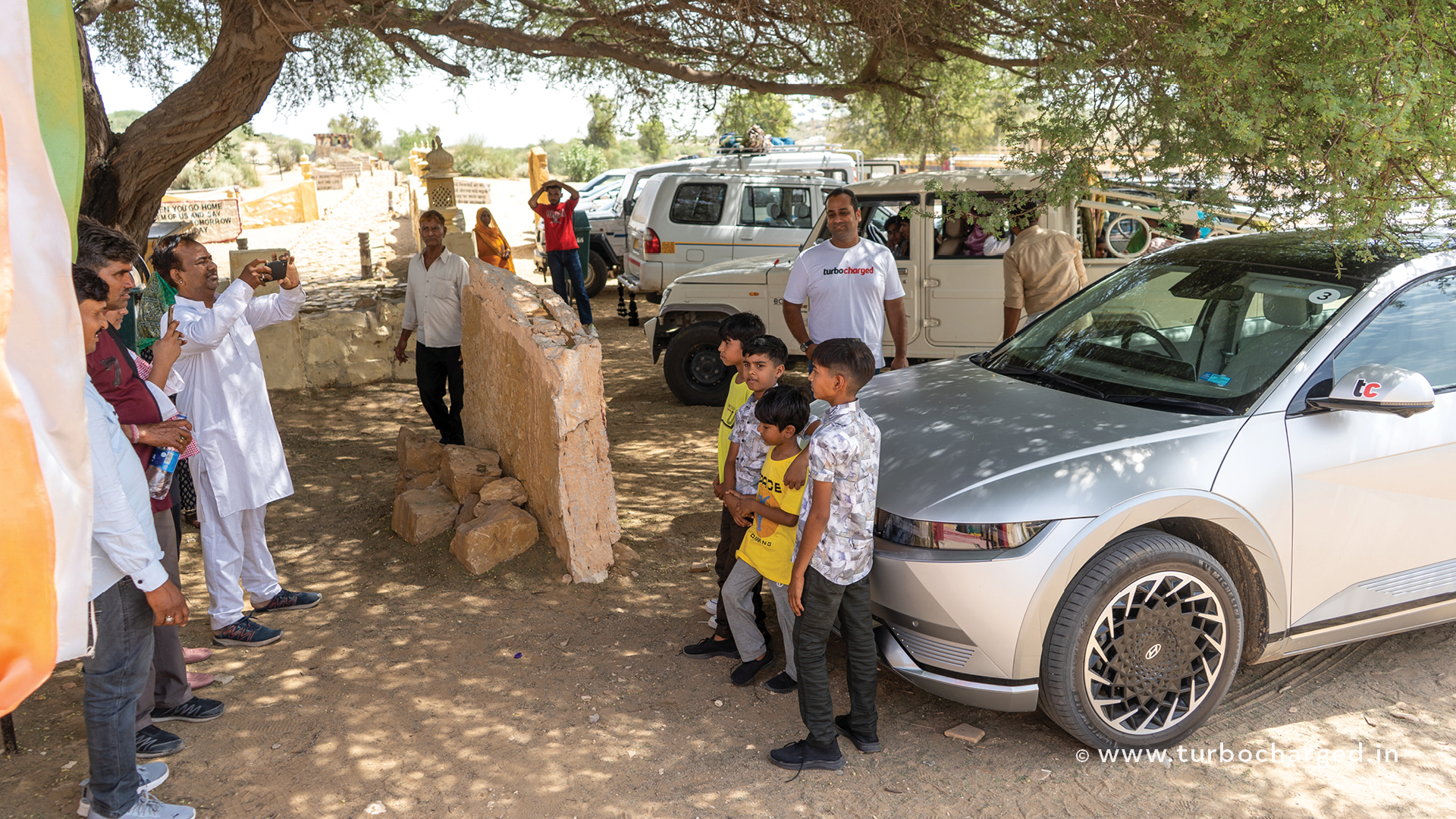
Also close to the border and not very far from Longewala is the Tanot Mata temple, which has its own share of folklore. The temple has been standing for decades and is now managed by the BSF or Border Security Force, the organisation that has a lion’s share in protecting the nation from threats along the borders.

As I took a break in the temple’s parking, I discovered yet another feature about the IONIQ 5 that makes it all the more alluring for road trips — V2L or Vehicle to Load. You can use the car’s charge to power external devices – way more than just your phone! So when I needed to charge my laptop, all I had to do was plug it into the socket underneath the second row seat. You can also power bigger devices like televisions etc besides camping equipment or use the charge to power lights when camping outdoors. So with the IONIQ 5 you could thus work from anywhere like I was, from one of India’s remotest corners, without a hitch!
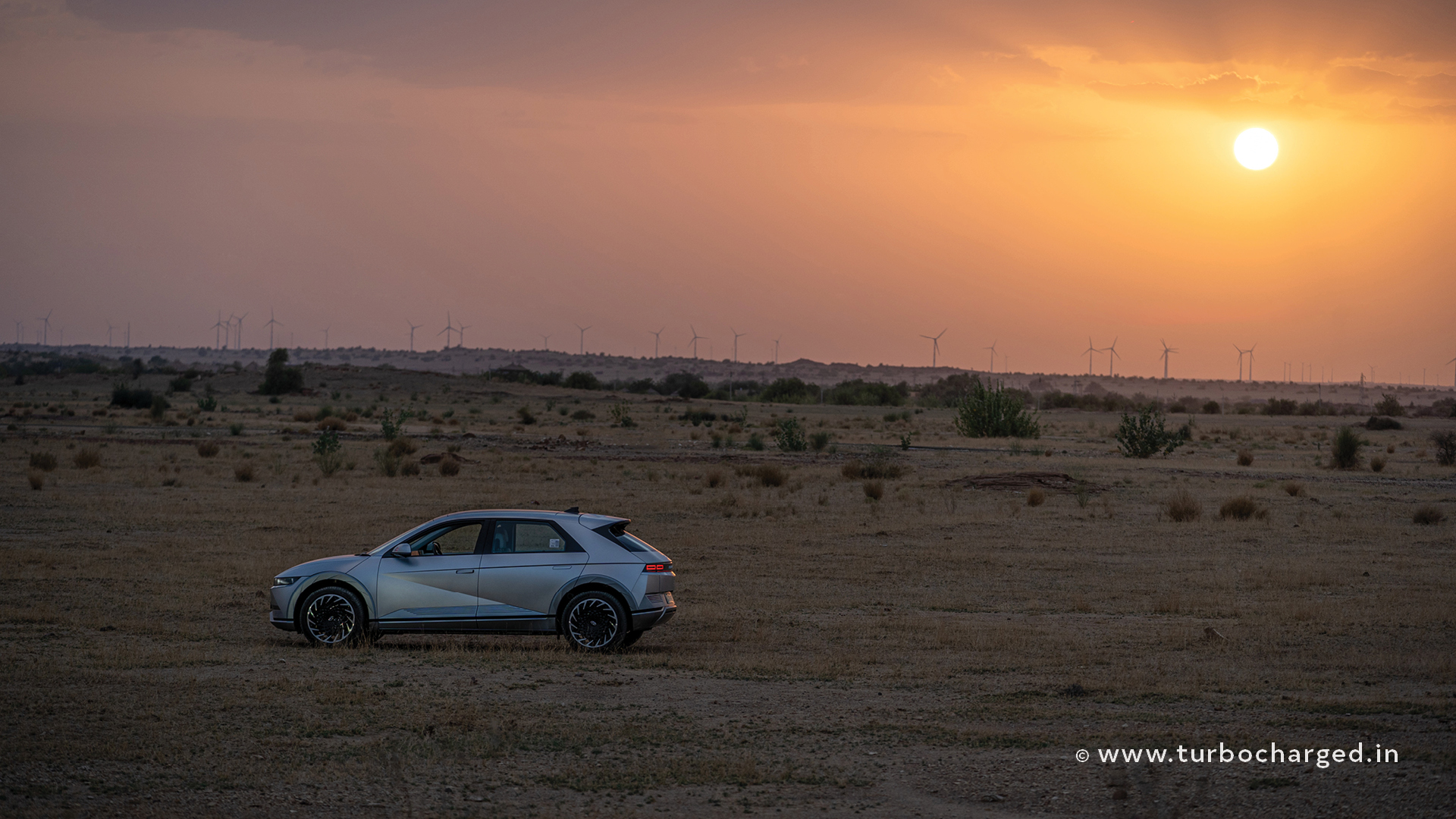
By noon air temperature hit 44 degree Celsius, but the IONIQ 5 was performing flawlessly. Despite the extreme heat, the EV was perfectly at ease, helping me cover distances in great comfort. It’s amazing how modern technology and engineering have helped Hyundai package the IONIQ 5 such that it was unfazed despite the high temperature, whereas occurrences of internal combustion engine powered cars breaking down by the road due to the extreme heat in summers are common. By the time I got to Longewala the searing heat outside just felt sickening, but to see army jawaans standing there unflinchingly as they stood guard was a sight and made my heart swell with pride.
Defence personnel are trained to protect the nation, come what may and visiting the Longewala border to see them discharge their duty in the inhospitable conditions was an honour. It’s not every day that you get to meet real life heroes and seeing them smile and go about their jobs without a hitch while I was sweating buckets and starting to feel exhausted in minutes was an experience. I was extremely happy to have visited Longewala, in the IONIQ 5. Multi-day road trips in an EV are not a dream anymore, something I experienced first hand in the IONIQ 5. The EV had also passed the acid test of being driven in some of the hottest possible climates with flying colours, a nod to Hyundai’s strong engineering roots in building cars that do more than just taking you from one place to another.
The IONIQ 5 had performed flawlessly, besides which its range per charge ensured I managed my 1,700km road trip from Delhi-NCR to Longewala and back without any range anxiety at all. This, also courtesy the ever-growing charging network that makes for immense confidence. All you need to do is plan your route and charging stops in advance and you won’t have to worry if planning to go on a roadtrip in an EV. But this is not our only adventure with the IONIQ5. Stay tuned, because if this time drove to India’s hottest border in it, the next time you’ll see us take the IONIQ5 to India’s coldest border, a place where internal combustion engines are left gasping for air!





